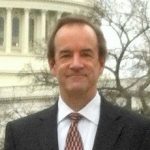 We have already published industry roundups on the biggest moments in IP for 2020 and predictions and thoughts for 2021. But the longest running industry insider feature on IPWatchdog is our annual “wishes” article. Each year, we invite stakeholders to share their wildest IP dreams and wishes for the coming year.
We have already published industry roundups on the biggest moments in IP for 2020 and predictions and thoughts for 2021. But the longest running industry insider feature on IPWatchdog is our annual “wishes” article. Each year, we invite stakeholders to share their wildest IP dreams and wishes for the coming year.
Unlike our Predictions and What Mattered roundups, this series allows our experts to get creative. The responses may have nothing to do with what is likely to happen, but rather gives commenters a chance to explain how 2021 would unfold in their dream scenario. This year, responses remained fairly grounded in reality, with the possible exceptions of hope for clarity on Section 101 law and other issues from the Supreme Court and that Andrei Iancu will remain USPTO Director under future President Biden.
Here’s to a new year where all your wishes come true!
 Andrea Anderson, Holland & Hart
Andrea Anderson, Holland & Hart
My wildest dream for trademark law in 2021 is that we will begin moving away from legal fictions surrounding likelihood of confusion determinations and fully embrace science! Emerging in the 1960s, the “modern” likelihood of confusion factors were developed by judges with doubtless limited knowledge of consumer psychology. But today, experts in the field know that the likelihood of confusion factors don’t accurately predict consumer behavior. For example, the “factors” would counsel that consumers will take more care in purchasing decisions involving their money and their property as opposed to purchases involving inexpensive consumer goods. But research suggests that many consumers spend more time selecting their mouthwash than their bank or their real estate broker. Other factors similarly conflict with what science tells us about consumer behavior. And amazingly, millions of dollars in attorney fees, damages awards, and business objectives hang on these factors.
But we don’t need to rely on these unhelpful factors. We have the capability to assess the likelihood of confusion using scientific methods such as consumer surveys. Online surveys have become quite affordable, relatively speaking. And new scientifically grounded methods for predicting consumer behavior are rapidly developing. Therefore, in litigation, why shouldn’t judges encourage parties to submit a survey or other scientifically based evidence demonstrating the likelihood of confusion or absence of it? Shouldn’t litigants agree that the best way to resolve disputes is to collect reliable data? That’s the way they make other business decisions, isn’t it?
Margie Aoki , Polsinelli
, Polsinelli
We hope that any public interest in patented technologies or infringement claims, particularly where there is public backlash, is used as an education opportunity about the value of patents and their role in promoting innovation. Particularly where the public sees companies punished for activities where they were trying to help or even just survive in the face of the pandemic, the public may respond negatively and question the value of patents. We hope that the value of patents and their positive impact on innovation is part of the public conversation surrounding those issues. We also hope that as the world is working more closely together on technologies and in joint interests we will see the international community move closer to global unified patent standards.
Bruce Berman , Brody Berman
, Brody Berman
My dream is that technology patents achieve a level of certainty that enable them to generate licensing without litigation. With that, the Patent Trial and Appeal Board (PTAB) would become a mechanism for affirming patent quality and facilitating transactions.
Patent licensing has become morbidly contentious, inevitably tied to litigation. AI and other search improvements and more comprehensive examinations can help to make licensing less arduous. Inter partes reviews (IPRs) should eliminate bad patents but at the same time be capable of certifying good or improved ones.
Disputes stem from uncertainty and are costly and unfair to defendant and plaintiff alike. They are most costly to those with quality inventions who lack the resources to play a costly game. This is bad for innovation, and in turn, bad for America. Policy and law that keeps innovation and entrepreneurs at bay through the threat of litigation serves the past, not the future. In an alternative universe, where patents are taken seriously, and businesses are willing to pay fairly for a license they need, new ventures will thrive and established ones adapt. IP holder behavior matters.
David H. Bernstein , Debevoise & Plimpton LLP
, Debevoise & Plimpton LLP
Just two weeks ago, my wildest dream for 2021 was passage of the Trademark Modernization Act. The dream was wild because, with end-of-year attention focused on the desperate need for financial stimulus, it seemed insensitive to worry about the needs of the IP community. And yet, there was a holiday miracle on K Street this year: the Trademark Modernization Act was appended to the omnibus budget bill (as we discussed in this post), President Trump signed it into law on December 27, and the presumption of irreparable harm upon a showing of likely success in trademark and advertising cases has now been restored as an addition to Section 34 of the Lanham Act. If dreams like that can come true, I am now dreaming of a new, more nuanced standard for contributory liability in trademark cases. A decade after Tiffany v. eBay stopped the development of the law by imposing an “actual knowledge” standard on whether online defendants are contributorily liable for trademark infringement or counterfeiting, the time has come to consider a more flexible standard that assesses whether the defendant could reasonably have anticipated the trademark violation, as I argued in the Stanford Technology Law Review. Such a standard would help ensure that defendants take reasonable steps to prevent trademark violations, including through technological advances. The SHOP SAFE Act, introduced in Congress earlier this year, gives me hope that this dream is not so far-fetched. Although that Act deals only with consumer products sold on e-commerce platforms that impact health and safety, one of the express purposes of the Act was to overrule Tiffany and to incentivize those e-commerce platforms to take measures to combat counterfeiting that they reasonably could identify. And the trend is catching on – just last month, the USPTO asked for comments from stakeholders on the contributory liability standard and whether it needs to be changed. If things keep moving in this direction, we might one day have a fairer standard that adequately protects both brand owners and consumers.
Matt Bernstein , Perkins Coie
, Perkins Coie
My dreams would include further clarity on the use of the PTAB’s discretionary authority to deny IPR institution.
Dyan Finguerra-DuCharme , Pryor Cashman LLP:
, Pryor Cashman LLP:
I would love it if the USPTO could finally develop specific and effective guidelines for the review of trademark specimens. While some measures have been introduced, the fraudsters have become more sophisticated by posting phony listings on secondary sources, such as Amazon. Trademark examiners routinely accept these screenshots because they meet the Lands’ End test even though the product packaging displayed is obviously digitally altered. The Trademark Office should push back when these specimens are submitted by foreign applicants and require submission of another specimen showing the use of the mark in U.S. commerce or require that the applicant respond to specific requests for information to establish whether there is actual use in commerce.
Robert Greenspoon , Flachsbart & Greenspoon, LLC
, Flachsbart & Greenspoon, LLC
Congress and the President just approved an IP small claims court—but for copyright. I hope that years of work (including by Judge Braden, who just got selected to serve on the Patent Public Advisory Committee) will finally see the same materialize for patents. As Judge Braden has explained, with just a few adjustments, the U.S. Court of Federal Claims would be an excellent venue to adjudicate patent small claims.
Efrat Kasznik , Foresight Valuation Group
, Foresight Valuation Group
The year 2020 has been pivotal for technology transfer and IP collaboration. We have seen some extraordinary acts of government-industry tech transfer collaboration, as well as corporate IP pooling and pledges, all of which were instrumental in pushing the boundaries of scientific discovery and speeding the creation of COVID-related solutions. Another interesting phenomenon was the repurposing of older technologies into new solutions, leveraging on existing technology and IP that has already been created. I would like to see some of that momentum sustained during the aftermath of COVID, and have companies more focused on finding ways to leverage their respective IP in collaboration to solve some pressing global problems, without waiting for the next pandemic to hit.
Meaghan H. Kent , Venable
, Venable
I hope that we see clarification on embedding and whether it infringes copyright, after two years of confusion that started in 2018 with Goldman v. Breitbart News Network and the doubt it cast on the “server test” and continued with Instagram’s change of its terms and the varying opinions in Sinclair v. Ziff Davis, McGucken v. Newsweek, and others in 2020. I would also like to see continued and significant progress in anticounterfeiting measures and removal of counterfeit products and products that do not comply with safety regulations from online marketplaces.
 Stephen Kunin, Maier & Maier
Stephen Kunin, Maier & Maier
I wish Director Iancu well in 2021, but I most of all wish that the next administration urges Andrei to remain as Director of the USPTO, regardless of which political party is in power.
 Randy Landreneau, US Inventor
Randy Landreneau, US Inventor
The ghosts of American innovation past visited certain SCOTUS Justices in the wee hours before the New Year and caused them to see the wrongness of their ways, resulting in 1) ruling in the upcoming Arthrex case that the PTAB is unconstitutional and disbanding it, 2) re-considering the Oil States decision and ruling that patents are are property rights, 3) determining that our Constitution clearly states that a patent provides the inventor an exclusive right, and therefore ruling that a patent holder has injunctive relief after winning an infringement lawsuit, and 4) removing the “abstract idea” language from Section 101. All of this resulting in global monopolies facing competition from disruptive startups and American innovation soaring for another 200 years for the benefit of all. The amazing thing is that these changes are now a wild dream, but were normal only a few years ago!
Daryl Lim , Center for Intellectual Property, Information and Privacy Law, The University of Illinois at Chicago, John Marshall Law School
, Center for Intellectual Property, Information and Privacy Law, The University of Illinois at Chicago, John Marshall Law School
That the United States can re-engage the world on IP issues. The United States generally has had a broad interest in the stability of the global innovation ecosystem and its partners’ well-being. It fostered an orderly IP environment where countries could prosper together. It will take some time for the United States to come back to such a position and convince others that it is taking such a position. The United States will also need to work with China to mitigate the inevitable contradictions between them, particularly when it comes to sensitive technologies. Failure would mean already complex cross-border IP disputes will become considerably more intertwined with messy geopolitics. For more on this, see my earlier post on national security and trade.
That courts and agencies embrace AI in adjudication Human decision making can be inherently capricious. The indeterminacy of patent-eligible subject matter, ideological swings in applying antitrust to novel licensing practices, the vagueness of fair use in copyright law, and test for likelihood of confusion in trademark law are but a few examples of how the law can do better in operationalizing rules and standards. IP offices already use AI in classification and searches. The next stage should see AI curate precedent, propose options, and where appropriate, model price and innovation outcomes to guide adjudication by agencies like the PTAB and FTC, as well as courts.
Charley Macedo , Amster, Rothstein & Ebenstein LLP
, Amster, Rothstein & Ebenstein LLP
In my wildest dreams, I would like to see Congress remove patent eligibility as a defense in litigation like it did for “best mode” in 2011, have IPRs add in Section 112 defenses in addition to prior art defenses, and make a stay in litigation based on an IPR proceeding be conditional on the parties accepting the final result of the IPR to the extent it goes to final written decisions and exhausts all appeals with respect to all prior art defenses. These changes will reduce the costs of patent litigations, focus the cases on the merits of the invention, and reduce satellite litigation.
Eli Mazour , Harrity & Harrity LLP
, Harrity & Harrity LLP
Biden asks USPTO Director Andrei Iancu to stay in his role until a new USPTO Director is confirmed and Iancu agrees. Biden follows the advice of Senator Chris Coons to nominate Coons’ IP Counsel Philip Warrick as the new USPTO Director. Supreme Court Justice Amy Coney Barrett successfully convinces her fellow conservatives on the court to rethink their previous approach to patent eligibility. And, finally, the miracle of the COVID vaccines helps usher in a new era of appreciation for patents and IP rights.
Gene Quinn , IPWatchdog, Inc.
, IPWatchdog, Inc.
I wish for the Supreme Court to come to their senses and appreciate the carnage they are responsible for with respect to the formerly great U.S. patent system.
Once upon a time the U.S. was the gold standard, but then eBay removed entitlement to injunctions, which eviscerated what had been until then an exclusive right. Ironically, patent owners ostensibly have an exclusive right until they withstand all validity challenges and prove infringement upon which time they have no right to exclude since they cannot get an injunction; brilliant legal work Justices! But wait, there is more. Due to the Alice/Mayo framework medical diagnostics, medical methods, certain medical treatments and a great deal of software is not patent eligible in the United States. Again, genius! Well done, particularly for an economy where software innovation is nearly ubiquitous and given pandemic sensibilities, we presumably all want the best medical care available. But wait, there is more. In Oil States the Supreme Court declared patents merely a “government franchise.” Why anyone wants a U.S. patent anymore is curious, and really an optimism indicator for the future because patents are worth less— far less—than they were 15 years ago.
So, I hope the Supreme Court begins acting like judges or they collectively grow a backbone, resign and run for Congress, President, or even emperor, because they seem to want to dictate far more often than prefer to adjudicate.
Manny Schecter , IBM
, IBM
To advance America’s global technology leadership and foster greater innovation diversity, I wish for the next Administration and Congress to appoint a diverse, historic, and barrier-breaking IP leader as our next USPTO Director. It must be noted that USPTO Director Andrei Iancu’s public service, dedication, and leadership within the IP community has been pivotal in maintaining our innovation leadership, while navigating the challenges brought on by COVID-19. When a transition of leadership at the USPTO occurs, it will be critical that the next USPTO Director possess the usual high credentials, experience, and background. It is also well established that diversity unlocks innovation and that innovation is critical to American competitiveness, jobs, and national security. The 2018 Study of Underrepresented Classes Chasing Engineering and Science Success (SUCCESS) Act report to Congress found evidence that women and minorities are underrepresented participants in US innovation. As a result, the National Council for Expanding American Innovation was created in 2020 to help the USPTO develop a comprehensive national strategy to increase participation in our innovation ecosystem by women and underrepresented minorities. One of the tenets of promoting diversity is providing leaders, role models, and mentors from all reaches of the community to encourage participation from others of similar backgrounds. The time is right for our next USPTO Director to be a first-time representative of a diverse community to lead the American intellectual property ecosystem to inspire and promote innovation to a new generation of innovators that will drive positive and impactful changes for all.
Jon Seppelt , Dykema
, Dykema
“My wildest IP dream is that congress passes legislation that amends 35 U.S.C. §101 to better align with the current state of technology. 35 U.S.C. §101 was last amended as a result of the Patent Act of 1952. It is an understatement to say that the landscape with respect to innovation has changed since §101 was amended, especially with respect to the amount of investment now directed towards software development. While the opinion in Alice Corp v. CLS Bank International is the latest Supreme Court opinion in a long running series that attempts to put forth a new standard for interpretation of 35 U.S.C. 101, the court’s ruling leaves much to be desired. The purpose of the patent system is to spur innovation; and the current interpretation of 35 U.S.C. 101, as proposed by Alice, has had detrimental effects on that purpose, due in part to the conflation of the standards for subject matter eligibility and patentability. While the USPTO has issued guidance in view of Alice, the guidance creates inconsistencies between application of Alice with respect to patent prosecution versus in the courts, where the guidance is nonbinding. While it is hopeful to think that the Supreme Court may grant cert with respect to a case for which they could continue to provide additional or alternative guidance, a better alternative would be that congress chooses to amend 35 U.S.C. 101 to better align with the current state of technology.”
Mark E. Stallion , Greensfelder, Hemker & Gale, P.C.
, Greensfelder, Hemker & Gale, P.C.
In my wildest dreams, is an international patenting framework using the Patent Cooperation Treaty (PCT) as the baseline. PCT includes most industrialized nations. However, PCT is only a conduit to filing subsequent national stage applications in member states. Although the PCT process includes search and examination, no international patent issues and the findings are not binding. Under PCT, an International Searching Authority’s (ISA’s) report identifies relevant references. An International Examining Authority examines the claims and determines whether the criteria of Novelty, Inventive Step and Industrial Applicability is met. Under PCT, the Applicant has opportunities to amend claims under Articles 19 and 34. Again, no patent issues. In my wildest dreams, a new PCT results in an international patent issuing that is enforceable in member jurisdictions. PCT patents only need be validated by member states similar to the European Patent Office. If the claims don’t meet all criteria, Applicant has one opportunity to amend, to place claims in condition for allowance. If not allowed, the Applicant can optionally enter national stage to continue examination; however, PCT findings are binding. A quality control panel is established made up of administrative judges from the examining offices that randomly reviews applications after allowance during a three-month publication period to approve allowance or remand for further examination thereby giving the Applicant one more chance to amend claims. During the publication period, third parties can submit prior art for a fee making challenges limited to Novelty and Inventive Step. The quality control panel reviews challenges.
William Stroever , Cole Schotz PC
, Cole Schotz PC
In my wildest dreams, in 2021, the USPTO will find a way to deal with the rash of trademark scam letters that seems to get worse every year. Individuals or companies scrape new application data from the USPTO website and send official-looking invoices directly to applicants. While many applicants recognize the scam or inquire about the letters to their attorneys, the occasional unsuspecting applicant will pay the invoice. The scam letters are not a new trend, and the USPTO even provides warnings to applicants about the letters. But the scam letters continue and it would be a 2021 miracle if the USPTO could find a way to end those letters.

![[IPWatchdog Logo]](https://ipwatchdog.com/wp-content/themes/IPWatchdog%20-%202023/assets/images/temp/logo-small@2x.png)

![[Advertisement]](https://ipwatchdog.com/wp-content/uploads/2024/04/Patent-Litigation-Masters-2024-sidebar-early-bird-ends-Apr-21-last-chance-700x500-1.jpg)

![[Advertisement]](https://ipwatchdog.com/wp-content/uploads/2021/12/WEBINAR-336-x-280-px.png)
![[Advertisement]](https://ipwatchdog.com/wp-content/uploads/2021/12/2021-Patent-Practice-on-Demand-recorded-Feb-2021-336-x-280.jpg)
![[Advertisement]](https://ipwatchdog.com/wp-content/uploads/2021/12/Ad-4-The-Invent-Patent-System™.png)







Join the Discussion
6 comments so far.
Reginald D Chatman
January 6, 2021 03:59 amI don’t have to much to say but somebody needs to pay it’s been 7 years of pure hell and back again and by the Grace of God we are still hear ? even during the virus ,What I’ve learned was when society is wrong it’s just that wrong and there’s no covering that up so my wish apoun a star is for this thing to be over with and let’s move on !! And hackers mind your own BUISNESS that’s what gotten this ? world in the shape it is now Violating Copyrights and Privacyrights Contents!! And unfair stock marketing trade that was just plain stealing we can’t have that any more !! When you owe someone pay them because you are not ABOVE THE LAW!! PERIID
Benny
January 5, 2021 12:02 pmMark Stallion, why attach a fee/fine to submitting third party observations? The current laws, permit submission free, gratis and for naught at the USPTO, EPO and WIPO. It can improve the quality of examination (despite the US examiner’s habit of routinely ignoring them).
__tr__
January 5, 2021 09:16 amBy “‘anti-troll’ TROLL” I just meant those furthering the notion that patents are evil—the anti- patent trolls that are actually “trolling” our free market by stamping on patent rights.
Anon
January 5, 2021 07:36 amAnti-troll TR011…?
Bought out by…?
I think that you have mixed up your kool-aids there.
__tr__
January 4, 2021 11:16 pmI love the comment by Attorney Schecter. It is a breath of fresh air for this blog. I have heard so many people gush over Andrei Iancu, and for good reason. He’s a strong leader at the Office and a great voice for patentees. But there is a leader out there, and I agree, a diverse one, a different one, and a uniquely unifying one that will get all of America back on board with innovation and out of the cobwebs of this monopolistic anti-inventor, “patent troll” narrative.
All of these companies that were crying “patent troll” back in the Obama-era are now mega-cap monopolies with more lobbying power than large countries, and I’m sorry. Still, we need someone who can access that other part of the scientific community, saying, “why is it always an old white guy.” I know so many of those scientists and engineers, and I am sorry, people, but they are some of the smartest ones.
I just hope whoever it is does not get bought out by the “anti-troll” TROLLS..
Pro Say
January 4, 2021 10:10 pmThe star-wishes of untold 1,000’s of independent inventors and small innovative companies from all 50 states:
What Randy, Gene, Stephen, and Robert wish for.
American innovation can afford no less.
No. Less.